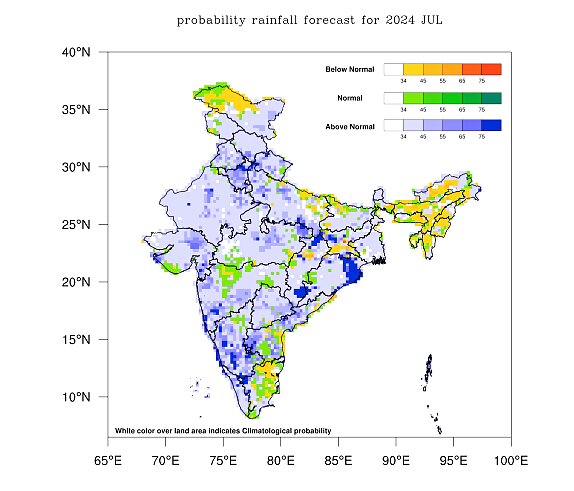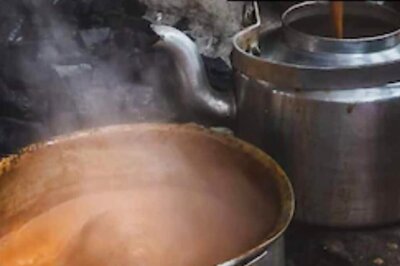
views
After enduring the warmest June in 123 years and a staggering rainfall deficit, Northwest India is likely to receive above-normal rains this July, along with the rest of India. According to the India Meteorological Department (IMD), the monthly rainfall is expected to be above 106% of the Long Period Average (LPA) over the whole of India this month.
This comes as good news for farmers as they gear up for the sowing of Kharif crops, especially water-intensive crops like paddy. June was exceptionally dry for Northwest India as the rainfall deficit touched nearly 32.6%. The region was scorched by severe heatwaves and recorded its warmest June in over 123 years, with the average monthly temperature nearly 1.65 degrees above normal.
The IMD’s monthly forecast for July shows Punjab, Haryana, West Uttar Pradesh, Madhya Pradesh would receive more rains than normal. But the prediction also comes with a warning for extreme rainfall events which may be disastrous for the region.
RISK OF RIVERINE FLOODS HIGH IN HP, UTTARAKHAND: IMD
According to IMD DG Dr M Mohapatra, excess rain in July could also lead to riverine floods in the Western Himalayan states of Himachal Pradesh, Uttarakhand, Jammu and Kashmir and the foothill states.
“The forecast certainly indicates a higher probability of heavy rain. The Western Himalayan region may see devastating impact of cloudbursts, heavy rainfall and landslides. Also parts of Central India, as heavy rain is expected in regions around Godavari, Mahanadi, so there is high probability of occurrence of localised floods. Disaster management and dam management has to be done accordingly,” the IMD chief cautioned.
However, Northeast India may heave a sigh of relief, as the region could see below-normal rains, which is likely to reduce the probability of floods. Apart from North-East India, some pockets in East UP like Gorakhpur, Western districts of Bihar, Jharkhand are also forecast to receive below-normal rains along with parts of South-East peninsular India, and Ladakh.

11% RAINFALL DEFICIT IN JUNE, HEATWAVE DAYS HIGHEST SINCE 2010
India recorded a rainfall deficit of nearly 10.9% in June, with Northwest India recording the highest shortfall of 32.6%, followed by Central India and East and Northeast India (around 13%). Only southern peninsula received excess rain of 14.2% above LPA. But, according to the weather department, the southwest monsoon has gained pace and will cover India within the next two-three days, earlier than its normal date of July 8.
“The monsoon advanced very slowly over Eastern India this time. There was a long delay of 7-10 days over Uttar Pradesh, Bihar, Odisha and especially West Bengal which it covered by June 25. Normally, we see three low-pressure systems in June, but this time, there was only one system which developed towards the end of June, which gave thrust to the monsoon and lasted barely three days, so the rain was subpar,” said Mohapatra.
The rainfall deficit caused the temperatures to spike, and triggered intense heatwaves which swept various parts of India in four long spells from April to June. According to the weather department, the blistering heatwaves scorched states like Rajasthan, MP, Punjab and Haryana, Delhi for nearly 20 to 38 days this summer – which was unusually high.
“The number of heatwave days was the highest in last 14 years since 2010. The spell that began around May 16 and lasted until June 5 was one of the longest. This time, the heatwaves also hit a much larger region and continued for many days. Northwest India was most impacted this time,” said the IMD chief.




















Comments
0 comment